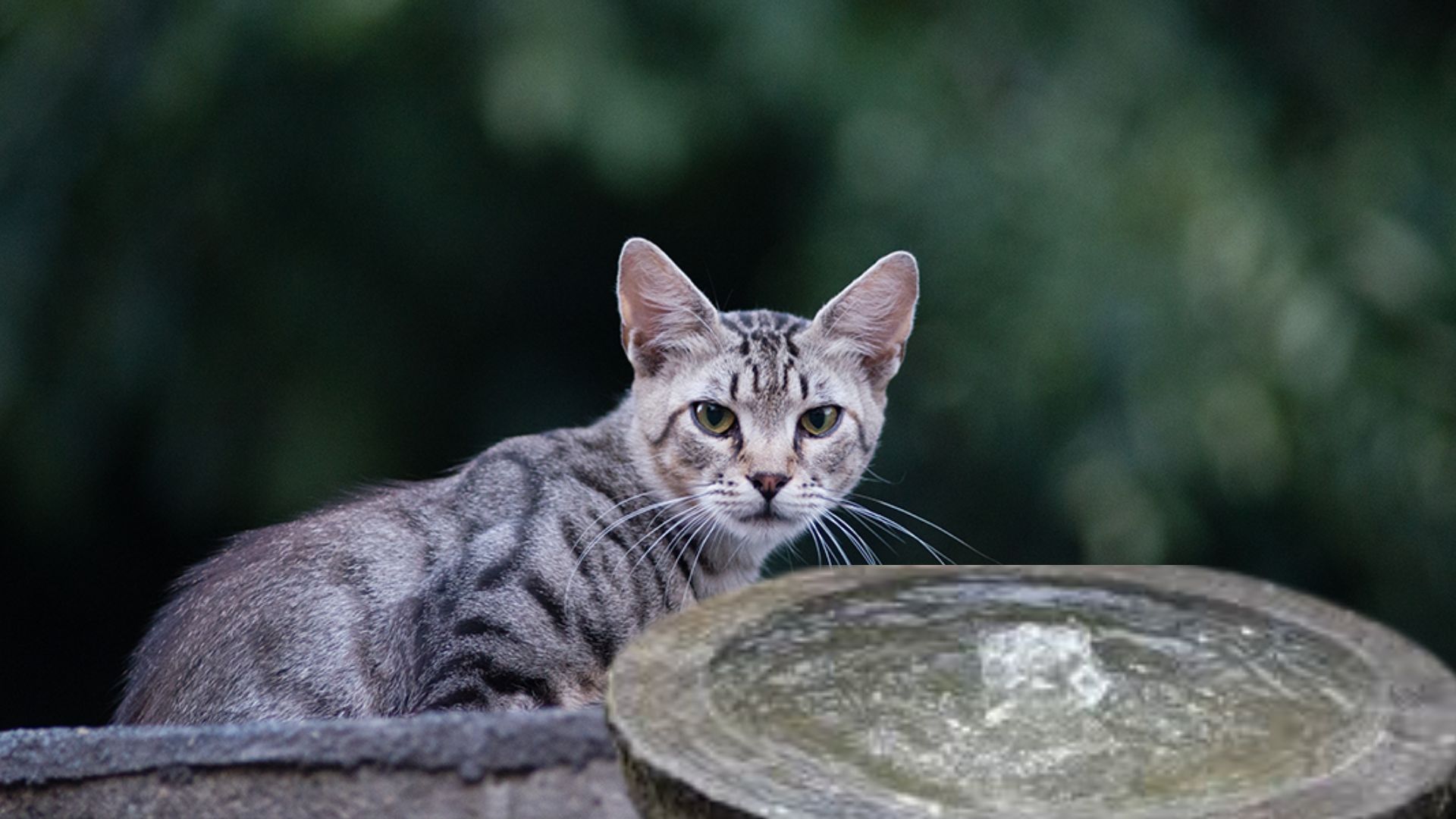
Why Do Cats Hate Water ?
Table of Contents
Why Do Cats Hate Water ?
Cats are known for their aversion to water, a trait that has puzzled and intrigued cat owners for generations. Understanding why cats dislike water can shed light on their behaviour and help pet owners navigate their feline companions’ preferences.
In this detailed blog article, we will explore the reasons behind cats’ dislike of water.
1. Sensitivity to Smells and Textures
Cats have a highly developed sense of smell, which can make them sensitive to odours and textures associated with water. Strong scents, such as those from shampoos or soaps, can be overwhelming for cats and may contribute to their aversion to water.
Additionally, the sensation of wet fur and the weight of water on their coat can feel uncomfortable and foreign to cats, leading them to avoid water-related activities.
2. Natural Instincts and Self-Grooming
Cats are meticulous groomers and spend a significant amount of time cleaning themselves. Their grooming behaviour is essential for regulating body temperature, removing dirt, and distributing natural oils throughout their fur.
Cats have evolved to be self-sufficient in maintaining their hygiene, and they may perceive water as disrupting their grooming routine. The sensation of wet fur can be unsettling for cats, as it interferes with their natural grooming process.
3. Evolutionary Heritage as Desert-Dwelling Hunters
Cats’ ancestors were desert-dwelling hunters, and their evolutionary history plays a role in their aversion to water. Unlike some animals that have adapted to aquatic environments, cats have not developed a natural affinity for water.
Their survival instincts and hunting strategies are not centred around water-based activities, leading to a general avoidance of water in domestic cats.
4. Lack of Control and Vulnerability
Cats are creatures that value control and independence. Being submerged in water can make cats feel vulnerable and out of control, which goes against their instinctual need for autonomy.
The inability to predict or control their movements in water can trigger anxiety and discomfort in cats, reinforcing their aversion to water-related experiences.
5. Negative Associations and Traumatic Experiences
Negative past experiences, such as being forcibly bathed or exposed to water in stressful situations, can create lasting aversions to water in cats.
Traumatic events linked to water, such as accidental falls into water bodies or exposure to loud noises during water-related activities, can leave a lasting impact on a cat’s perception of water and contribute to their dislike of it.
How to help a cat overcome its fear of water
To help a cat overcome its fear of water, consider the following tips;
1. Gradual Exposure: Introduce your cat to water gradually to help them acclimate to the sensation. Start by acclimating them to the tub or sink without water, then slowly introduce small amounts of water over time. This gradual exposure can help reduce their fear and anxiety towards water.
2. Positive Reinforcement: Use positive reinforcement techniques to associate water with positive experiences. Reward your cat with treats, praise, or playtime when they show calm behaviour around water or make progress in overcoming their fear. This positive reinforcement can help create a more positive association with water.
3. Create a Relaxing Environment: Ensure the bathing area is calm, quiet, and free of distractions to help your cat feel more at ease. Providing a comfortable and stress-free environment can help reduce their anxiety and fear during water-related activities.
4. Use Waterless Bathing Alternatives: If your cat is extremely fearful of water, consider using waterless cat bath products like dry shampoo or wipes. These alternatives can help keep your cat clean without the need for traditional water baths, providing a stress-free grooming option for cats who dislike water.
5. Professional Grooming Services: If your cat’s fear of water persists despite your efforts, consider seeking professional grooming services that specialize in handling cats with water aversion. Professional groomers can provide expert care and assistance in managing your cat’s grooming needs effectively.
6. Patience and Consistency: Overcoming a cat’s fear of water may take time and patience. Consistent and gentle exposure to water, coupled with positive reinforcement and a calm approach, can help gradually desensitize your cat to water-related experiences. Be patient and understanding throughout the process to support your cat’s comfort and well-being.
Remember to prioritize your cat’s comfort, safety, and well-being throughout the process of helping them conquer their fear of water.
Alternative ways to bathe a cat
Cats are known for their grooming habits, but there are situations where they might need help staying clean. If your feline friend has gotten into something messy or smelly, you might need to bathe them.
However, not all cats enjoy water, so it’s essential to find alternative ways to keep them clean without causing undue stress. Here are some alternative ways to bathe a cat:
1. Brushing and Combing: If your cat is dusty or muddy, grooming them with a cat brush or fine-toothed comb will remove the grime without the need for water. Regular brushing also helps distribute natural oils throughout their fur and reduces shedding.
2. Spot Cleaning: Use specialist pet wet wipes or waterless shampoos to clean sticky patches or wash a cat’s paws without the need for a full bath. Always choose products labelled safe for cats.
3. Dry Shampoo: Dry shampoo or waterless cat bath products can be an excellent alternative for cats that dislike water. These products absorb excess oils and remove dirt without the need for water. Follow the instructions on the product label for best results.
4. Professional Groomer: If your cat needs a thorough cleaning or detangling, consider a professional pet-grooming service. Some groomers offer mobile services, which might be easier than taking your cat to a salon.
5. Wipes and Pet-Friendly Cleaners: If your cat’s face needs cleaning, use a warm, damp washcloth to carefully wipe it off. For sticky or dangerous substances, you can use a drop or two of cat shampoo on the washcloth to remove them.
6. Alternative Cleaning Solutions: In a pinch, you can use household items like baby shampoo, Dawn dish soap, or Castile soap to clean your cat. These products are gentle and safe for cats when used correctly. However, it’s essential to rinse your cat’s fur well to remove any residue.
Remember, the key to successfully bathing a cat is to make the experience as stress-free as possible. Use positive reinforcement, such as treats and praise, to create a positive association with grooming. Always choose products specifically designed for cats or recommended by veterinarians to ensure your cat’s safety and comfort.
Benefits of spot cleaning a cat instead of bathing it
Spot cleaning a cat instead of bathing it has several benefits, including:
1. Reduced Stress: Cats generally dislike water and bathing, so spot cleaning can help minimize their stress levels compared to a full bath.
2. Maintaining Natural Oils: Cats groom themselves, and their saliva contains natural oils that help maintain their coat’s health. Spot cleaning helps preserve these oils, while bathing can strip them away.
3. Minimizing Skin Issues: Bathing cats too frequently, over time, can dry out their skin, leading to itchy skin and various skin problems. Spot cleaning avoids this issue.
4. Easier Litter Box Management: Spot cleaning the litter box regularly helps keep it fresh and reduces the chances of bacterial overgrowth, which can lead to feline urinary tract infections (UTIs).
5. Hygiene and Cleanliness: Spot cleaning cat toys, cat beds, and other items at least every 2-4 weeks helps maintain great hygiene for your feline, reducing the risk of bacterial and pathogen buildup.
In summary, spot cleaning offers a less stressful, more natural, and more hygienic alternative to bathing cats, while still ensuring their cleanliness and well-being.
Some common methods for spot cleaning a cat?
Spot cleaning a cat is a method of cleaning your cat without giving it a full bath. This can be beneficial for cats that dislike water or have sensitive skin. Here are some common methods for spot cleaning a cat:
1. Wet Cloth or Paper Towel: Use a clean, wet cloth or paper towel to gently wipe off any obvious stains or organic matter on your cat’s fur. Avoid using disinfectants, as they can be harsh on your cat’s skin.
2. Specialist Pet Wipes: Use specialist pet wet wipes or waterless shampoos to clean specific areas of your cat’s fur. These products are designed to be gentle on your cat’s skin and can help remove dirt, grime, or unpleasant odours.
3. Dry Shampoo: Dry shampoo or waterless cat bath products can be used to clean your cat without water. These products absorb excess oils and remove dirt, leaving your cat’s fur clean and fresh.
4. Brushing: Regularly brushing your cat’s fur can help remove loose hair, dirt, and dander. This can also help minimize the formation of hairballs and keep your cat’s coat looking healthy.
5. Fur Care: Depending on your cat’s fur type, you may need to brush it daily or weekly. Long-haired breeds typically benefit from daily brushing, while short-haired breeds can be brushed at least once a week.
6. Toothbrushing: Regular tooth brushing can help reduce the formation of plaque and tartar on your cat’s teeth, promoting good oral health. Use a toothpaste formulated for cats and brush their teeth daily or every other day.
7. Professional Groomer: If your cat requires a thorough cleaning or has matted fur, consider taking it to a professional pet-grooming service. Some groomers offer mobile services, which can be more convenient than taking your cat to a salon.
Remember, spot cleaning should not replace regular bathing and grooming. It is important to maintain your cat’s overall hygiene and health by providing regular baths, grooming sessions, and dental care.
How to remove cat hair from furniture using spot cleaning
To remove cat hair from furniture using spot cleaning, you can try several methods. One popular method is using a rubber glove, such as a dishwashing glove, to attract and gather the fur. Simply put on the glove and brush your hand along the fabric.
The fur should stick to the glove, making it easy to remove. This method works on more than just furniture, such as pillowcases and lampshades.
Another method is using a slightly wet sponge to attract hair on upholstery and fabric. This method is preferred because it doesn’t use up lots of tape needlessly. A dry rubber glove can also be used for quick touch-ups.
For wooden furniture, a soft cloth and furniture polish or anti-static dusting spray can be used to eliminate the electric charge and make removal easier.
For carpet, a pumice stone can be gently scraped along the surface to gather any hair. A FURminator can also be used lightly on rugs to scrape up the hair without damaging the carpet.
On hardwood, laminate, or other bare floors, an electrostatic or microfiber dry mop can be used to corral the hair in one spot.
When vacuuming your carpet, going over areas twice and alternating directions can help loosen stubborn hairs. A specialty pet vacuum with extra strong suction power and a good HEPA filter can be a worthwhile investment for those dealing with pet hair.
Brushing or FURminating your pet about two days a week can also help reduce the amount of fur tumbleweeds in your living room.
Continue reading: What is Feline Leukemia Virus ?


